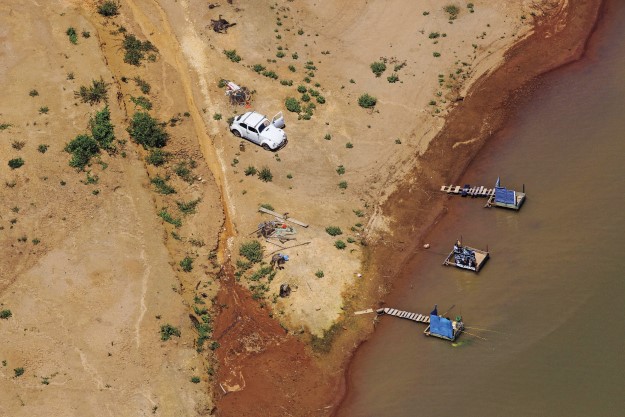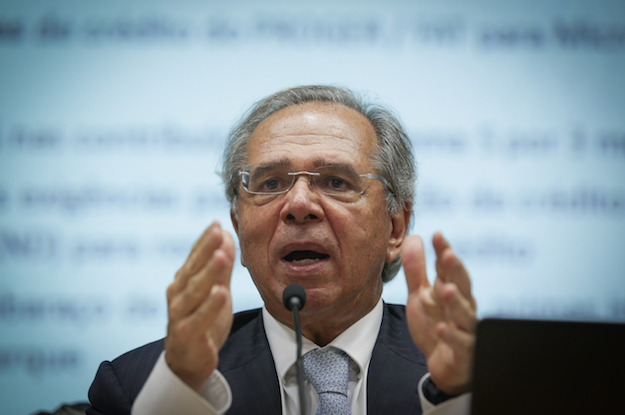This article is adapted from AQ’s latest issue on the politics of water in Latin America | Leer en español
If there is a shorthand for fierce global corporate competition, Coke versus Pepsi would be it.
But then, there is water.
“In isolation, we wouldn’t reach results,” said Wanessa Scabora, a sustainability manager for Coca-Cola FEMSA in Brazil. “When it comes to water, we are partners.”
Their partnership came after São Paulo, Brazil’s megalopolis of 22 million people and the country’s industrial heart, hit a once-in-250-years drought in 2014 and 2015. Supplies in the city’s main reservoir, Cantareira, dwindled to just 3% of capacity. De facto emergency rationing left neighborhoods without water for days at a time. There was even talk among business leaders about long-term relocation of factories elsewhere — about 60,000 companies operating in the area were considered at risk.
The almost-too-late return of normal rainfall eventually ended the crisis. But in an era of extreme climate volatility, companies were unwilling to risk going through such a trauma again. Soon after, companies including Coca-Cola Femsa, Coca-Cola Brasil, PepsiCo and beer maker Ambev (AB InBev’s Brazilian arm) joined an initiative known as the Coalition of Cities for Water.
The Nature Conservancy (TNC) in Brazil launched the project in 2015 as part of the Latin American Water Funds Partnership, an initiative co-sponsored by the Inter-American Development Bank. It encompasses 24 water funds operating in Latin America, with resources invested in specific, localized projects that can either protect or restore local watersheds. The fund pays land owners and small farmers not to degrade areas surrounding water sources. It also works to reforest areas to increase water absorption, and restore riverbanks to reduce erosion and sediment going into rivers.
“We look for nature-based solutions,” said Samuel Barreto, head of water scarcity for TNC Brazil.
The alliance is supporting multiple initiatives in the PCJ basin (named for the three rivers that form it: Piracicaba, Capivari and Jundiaí) in São Paulo. The basin serves more than 5 million people, a large part of the state’s industrial park, and is an important component of the Cantareira reservoir system. The area grapples with multiple issues from riverbank erosion and sediment impacting the quality of the water and challenges to protecting springs inside private lands.
“What they are doing is very important,” said Pedro Roberto Jacobi, researcher and professor at the Institute of Energy and Environmental of the University of São Paulo. He said such programs are “a drop in the ocean,” however, and must be implemented at a much larger scale to have a major impact.
Indeed, the need is apparent — despite the fact both the city and the country get plentiful rainfall. “It seems crazy to talk about scarcity in Brazil,” said Richard Lee, head of sustainability for Ambev. Looking at a São Paulo city map, it does sound odd: two large dams, a major reservoir, three major rivers crossing the state capital — and another 200 streams running underground, hidden by the avenues and skyscrapers.
Except the region’s image of abundance doesn’t reflect reality, even in normal times. The city has seven times less water available per inhabitant than the annual minimum suggested by the UN — while housing 11% of Brazil’s GDP.
“We have the death penalty for rivers in Brazil,” said Barreto. During the 2014 crisis, São Paulo’s polluted rivers were useless to supply the resource, while the low levels of even dirty water in some stretches affected another business: grains and ethanol producers resorted to — much more expensive — trucks as the hydroway connecting farms to the Santos port was shut down for almost two years, because it was too low even for barges to navigate.
Water utility Sabesp, a publicly traded company (the state government owns 50.3% of the shares) has invested over $1 billion since 2015 in gray infrastructure to add new sources of water, install connections to create options when one system goes dry, and several other projects. But Jacobi said the problem in São Paulo is structural and not new. Besides “deforestation around reservoirs and occupation of watershed areas,” he said pollution is what significantly reduces the availability of usable water. Just one river in São Paulo, the Tietê, carries waste from 1,200 companies, according to the national water agency.
“It is frustrating that we can’t convince companies fast enough that business as usual is not possible anymore,” Jacobi told AQ.
Andrea Erickson-Quiroz, TNC’s global head of water security, has a suggestion for entrepreneurs. “You don’t need to listen to environmentalists,” she told AQ. “If you think water is something we can put off, listen to your peers in the food and beverage industry. They are moving.”
Many companies say they get it. PepsiCo Brazil said it has reduced the amount of water used in industrial processes by 25% since 2015, in what is becoming a trend in many sectors. As Andre Fourie, global director for water sustainability at AB InBev, put it: “Water is the only commodity that is cheap, scarce and wasted. Without it, we don’t have a business.”








